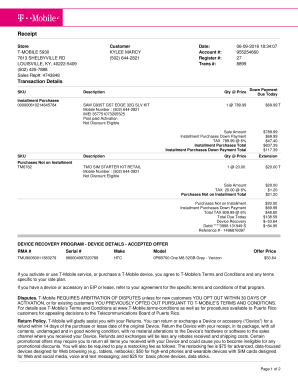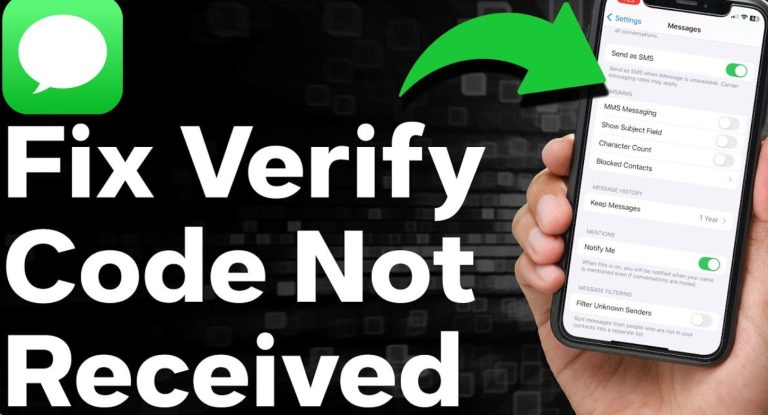Your T-Mobile statement serves as a detailed record of your monthly wireless service charges. It’s packed with information, but it can be overwhelming if you’re not familiar with the layout and terminology. This comprehensive guide will walk you through every section of your T-Mobile statement, explaining each charge and feature in plain language.
1. Account Summary
The Account Summary section provides a snapshot of your current billing cycle. Here’s what you’ll find:
- Billing Period: The start and end dates of your current billing cycle.
- Previous Balance: Any outstanding charges from your previous bill.
- Payments & Credits: The total amount you’ve paid or received in credits during this billing cycle.
- New Charges: The total cost of your current month’s service and any additional charges.
- Total Due: The combined amount of your previous balance and new charges, minus any payments or credits.
- Due Date: The date by which your payment must be received to avoid late fees.
2. Plan Charges
This section outlines the charges associated with your specific T-Mobile plan. It may include:
- Monthly Service Fee: The base cost of your plan, including unlimited talk, text, and data.
- Device Installment Plan (EIP): If you’re financing a device through T-Mobile, you’ll see the monthly installment payment here.
- Additional Lines: The cost of each additional line on your account.
- International Calling/Roaming: Any charges for calls or data usage while traveling abroad.
3. Usage Charges
This section details any charges incurred due to usage that exceeds your plan’s allowances. Common usage charges include:
- Data Overage: Fees for exceeding your monthly data limit.
- Text Messaging Overage: Fees for exceeding your monthly text messaging limit (rare on most plans).
- International Calling Overage: Additional charges for international calls beyond your plan’s included minutes.
4. Taxes & Fees
This section lists the various taxes and fees imposed by federal, state, and local governments. These may include:
- Federal Universal Service Fund (USF): A fee that supports telecommunications services in rural and high-cost areas.
- Regulatory Cost Recovery Fee: A fee that helps T-Mobile recover costs associated with complying with government regulations.
- State and Local Taxes: Sales tax and other applicable taxes levied by your state and local government.
5. Other Charges & Credits
This section includes any miscellaneous charges or credits not covered in the previous sections. These might include:
- Activation Fees: One-time charges for activating a new line or device.
- Upgrade Fees: Charges for upgrading your device or plan.
- Late Payment Fees: Fees for failing to pay your bill by the due date.
- Credits: Refunds or discounts applied to your account.
6. Detailed Call & Text Logs
This section provides a comprehensive list of your incoming and outgoing calls and text messages. For each entry, you’ll see:
- Date & Time: When the call or text occurred.
- Phone Number: The number you called or texted, or the number that called or texted you.
- Duration: The length of the call (for calls only).
- Type: Whether it was an incoming or outgoing call/text.
- Charges: Any applicable charges for the call or text (usually zero on unlimited plans).
7. Data Usage Summary
This section provides a breakdown of your data usage during the billing cycle. It may include:
- Total Data Used: The total amount of data you consumed.
- Data Used by Device: The data usage for each device on your account.
- Data Used by Application: The data usage for different apps and services.
8. Device Information
This section lists the devices associated with your account, including:
- Phone Number: The phone number assigned to each device.
- Device Type: The make and model of each device.
- IMEI/MEID: The unique identification number for each device.
9. Important Messages
This section contains important announcements and updates from T-Mobile, such as:
- Network Upgrades: Information about upcoming network improvements.
- Plan Changes: Notifications about changes to your plan or pricing.
- Special Offers: Promotional offers and discounts.
10. Contact Information
This section provides T-Mobile’s customer service contact information, including:
- Phone Number: The number to call for customer support.
- Website: The T-Mobile website address.
- Mailing Address: The address to send payments or correspondence.
Understanding Your T-Mobile Statement: FAQs
1. Why is my bill higher than expected?
Several factors can contribute to a higher-than-expected bill:
- Usage Overage: If you exceeded your plan’s data, text, or international calling allowances, you’ll incur additional charges.
- New Charges: If you recently added a new line, upgraded your device, or activated a new service, you’ll see those charges reflected on your bill.
- Taxes & Fees: Taxes and fees can add a significant amount to your total bill.
2. How can I lower my T-Mobile bill?
Here are some tips to reduce your monthly bill:
- Review Your Plan: Ensure your current plan meets your needs. If you’re consistently exceeding your data allowance, consider upgrading to a plan with more data.
- Monitor Your Usage: Keep track of your data, text, and international calling usage to avoid overage charges.
- Take Advantage of Discounts: T-Mobile offers various discounts for military personnel, seniors, and other groups.
- Consider AutoPay: Enrolling in AutoPay may qualify you for a monthly discount.
3. How can I pay my T-Mobile bill?
T-Mobile offers several convenient payment options:
- Online: Log in to your T-Mobile account and pay through the website or app.
- Phone: Call T-Mobile customer service and pay over the phone.
- In-Person: Visit a T-Mobile store and pay in person.
- Mail: Send a check or money order to the address listed on your statement.
4. What happens if I don’t pay my T-Mobile bill on time?
Failing to pay your bill by the due date can result in:
- Late Payment Fees: You’ll be charged a late fee, which can increase your total bill significantly.
- Service Suspension: Your service may be temporarily suspended until you pay your outstanding balance.
- Credit Impact: Late payments can negatively impact your credit score.
5. How can I dispute a charge on my T-Mobile statement?
If you believe a charge on your statement is incorrect, contact T-Mobile customer service immediately. They will investigate the charge and provide a resolution.
Conclusion
Your T-Mobile statement is a valuable tool for understanding your monthly wireless service charges. By familiarizing yourself with the different sections and terminology, you can gain better control over your spending and avoid unexpected surprises. If you have any questions about your statement, don’t hesitate to contact T-Mobile customer service for assistance.
Read More: Free Text and Call Online: The Future of Communication






